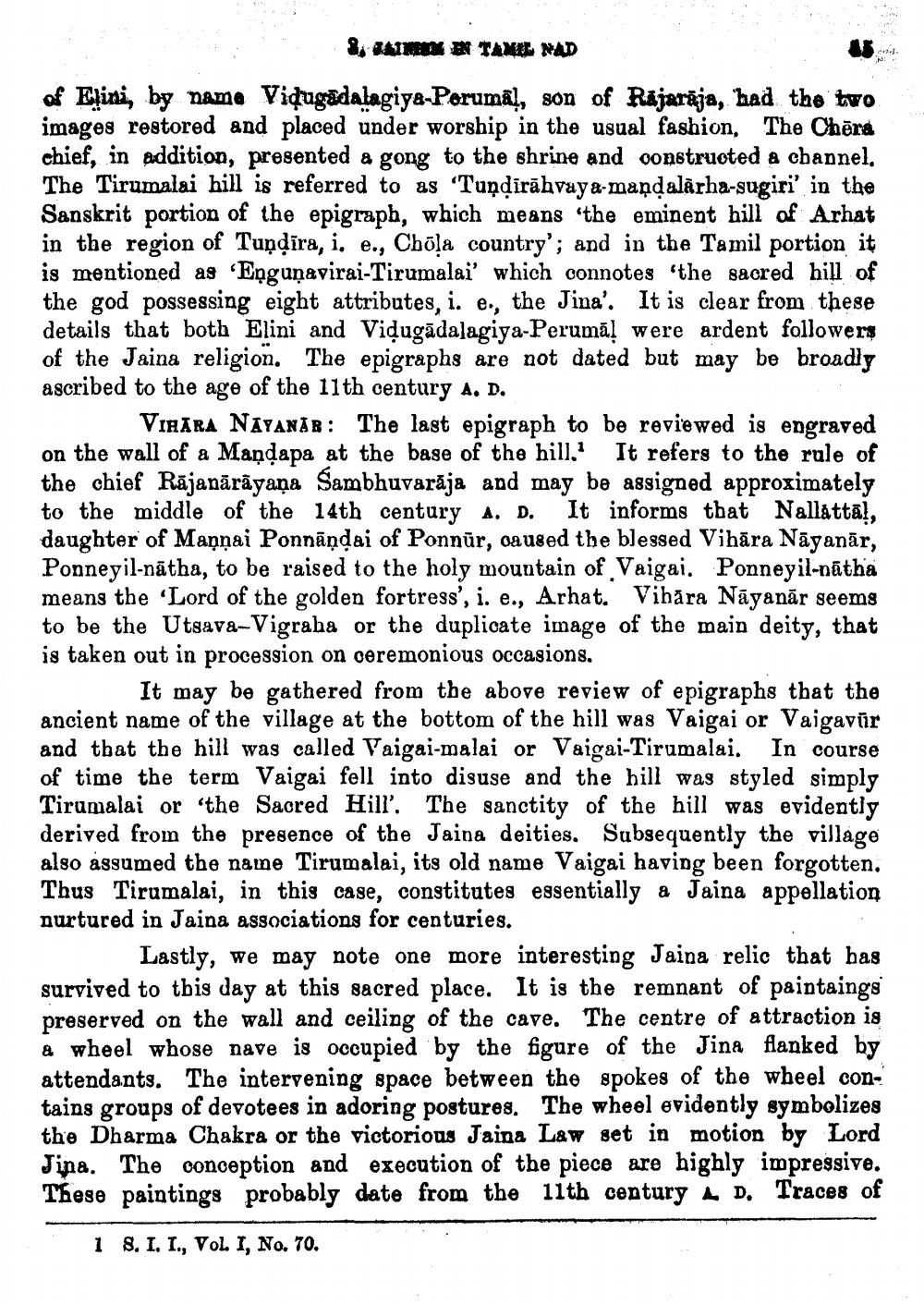________________
3, SAINIUM IN TAMIL NAD
of Elini, by name Vidugadalagiya-Perumal, son of Rajaraja, had the two images restored and placed under worship in the usual fashion, The Chera chief, in addition, presented a gong to the shrine and constructed a channel. The Tirumalai hill is referred to as 'Tundirahvaya-manḍalarha-sugiri' in the Sanskrit portion of the epigraph, which means 'the eminent hill of Arhat in the region of Tunḍīra, i. e., Chōla country'; and in the Tamil portion it is mentioned as 'Engunavirai-Tirumalai' which connotes the sacred hill of the god possessing eight attributes, i. e., the Jina'. It is clear from these details that both Elini and Viḍugädalagiya-Perumā! were ardent followers of the Jaina religion. The epigraphs are not dated but may be broadly ascribed to the age of the 11th century A. D.
VIHARA NAYANAR: The last epigraph to be reviewed is engraved on the wall of a Mandapa at the base of the hill.1 It refers to the rule of the chief Rajanārāyaṇa Sambhuvarāja and may be assigned approximately to the middle of the 14th century A. D. It informs that Nallattal, daughter of Manņai Ponnaṇḍai of Ponnur, caused the blessed Vihara Nāyanār, Ponneyil-natha, to be raised to the holy mountain of Vaigai. Ponneyil-natha means the 'Lord of the golden fortress', i. e., Arhat. Vihara Nayanar seems to be the Utsava-Vigraha or the duplicate image of the main deity, that is taken out in procession on ceremonious occasions.
It may be gathered from the above review of epigraphs that the ancient name of the village at the bottom of the hill was Vaigai or Vaigavür and that the hill was called Vaigai-malai or Vaigai-Tirumalai. In course of time the term Vaigai fell into disuse and the hill was styled simply Tirumalai or the Sacred Hill'. The sanctity of the hill was evidently derived from the presence of the Jaina deities. Subsequently the village also assumed the name Tirumalai, its old name Vaigai having been forgotten. Thus Tirumalai, in this case, constitutes essentially a Jaina appellation nurtured in Jaina associations for centuries.
Lastly, we may note one more interesting Jaina relic that has survived to this day at this sacred place. It is the remnant of paintings preserved on the wall and ceiling of the cave. The centre of attraction is a wheel whose nave is occupied by the figure of the Jina flanked by attendants. The intervening space between the spokes of the wheel contains groups of devotees in adoring postures. The wheel evidently symbolizes the Dharma Chakra or the victorious Jaina Law set in motion by Lord Jina. The conception and execution of the piece are highly impressive. These paintings probably date from the 11th century AD. Traces of
1 8. I. I., Vol. I, No. 70.




